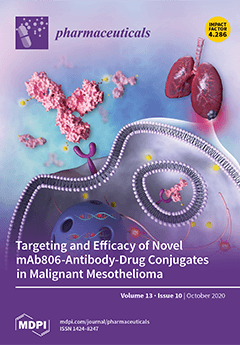Open AccessArticle
Novel Photosensitizer β-Mannose-Conjugated Chlorin e6 as a Potent Anticancer Agent for Human Glioblastoma U251 Cells
by
Yo Shinoda, Kohei Kujirai, Kohei Aoki, Mai Morita, Masato Masuda, Lihao Zhang, Zhou Kaixin, Akihiro Nomoto, Tsutomu Takahashi, Yayoi Tsuneoka, Jiro Akimoto, Hiromi Kataoka, Rioko Rachi, Atsushi Narumi, Tomokazu Yoshimura, Shigenobu Yano and Yasuyuki Fujiwara
Cited by 13 | Viewed by 4151
Abstract
A photosensitizer is a molecular drug for photodynamic diagnosis and photodynamic therapy (PDT) against cancer. Many studies have developed photosensitizers, but improvements in their cost, efficacy, and side effects are needed for better PDT of patients. In the present study, we developed a
[...] Read more.
A photosensitizer is a molecular drug for photodynamic diagnosis and photodynamic therapy (PDT) against cancer. Many studies have developed photosensitizers, but improvements in their cost, efficacy, and side effects are needed for better PDT of patients. In the present study, we developed a novel photosensitizer β-mannose-conjugated chlorin e6 (β-M-Ce6) and investigated its PDT effects in human glioblastoma U251 cells. U251 cells were incubated with β-M-Ce6, followed by laser irradiation. Cell viability was determined using the Cell Counting Kit-8 assay. The PDT effects of β-M-Ce6 were compared with those of talaporfin sodium (TS) and our previously reported photosensitizer β-glucose-conjugated chlorin e6 (β-G-Ce6). Cellular uptake of each photosensitizer and subcellular distribution were analyzed by fluorescence microscopy. β-M-Ce6 showed 1000× more potent PDT effects than those of TS, and these were similar to those of β-G-Ce6. β-M-Ce6 accumulation in U251 cells was much faster than TS accumulation and distributed to several organelles such as the Golgi apparatus, mitochondria, and lysosomes. This rapid cellular uptake was inhibited by low temperature, which suggested that β-M-Ce6 uptake uses biological machinery. β-M-Ce6 showed potent PDT anti-cancer effects compared with clinically approved TS, which is a possible candidate as a next generation photosensitizer in cancer therapy.
Full article
►▼
Show Figures






